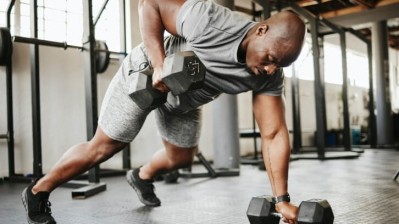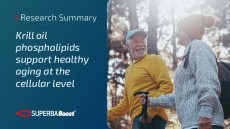Creatine co-supplementation could boost firefighter performance on the job

“This study is the first of its kind to report on the ergogenic benefits of providing firefighters with dietary ingredients purported to enhance occupational-specific performance outcomes,” the researchers wrote in the journal Nutrients.
The study, funded through a student grant from the University of Wisconsin-La Crosse, folds into a wider sports science collaboration between Mayo Clinic Health System and the La Crosse Fire Department (LCFD) evaluating strategies to optimize firefighter strength and stamina. Captain Adam Markert, a co-author on the study, was named 2023 LCFD firefighter of the year for not only his leadership within the department but for his dedication to furthering firefighter fitness.
Creatine for the tactical athlete
Firefighters are considered “tactical athletes” due to the physically demanding nature and specialized activities performed under often dangerous conditions, the researchers noted, referencing a recent International Society of Sports Nutrition position stand on tactical athlete nutrition.
“In recent years, there has been an increased emphasis on developing evidence-based physical training methodologies and strategies aimed at maintaining and improving occupational and physical performance, as well as reducing the risk of injury and disease within these populations,” the position stand stated. “Subsequently, the importance of providing nutritional guidance and identifying best practices for fueling tactical athletes has become paramount.”
Recent reviews, including the ISSN Position Stand on creatine monohydrate, have outlined the ergogenic potential of creatine supplementation to increase high-intensity exercise capacity, peak power, maximal strength, repetitions completed before fatigue and fat-free mass while undergoing physical training.
A growing body of research also supports creatine’s potential to help improve recovery and mitigate muscle tissue damage; lower incidence of muscle-related injuries; boost cognitive function in response to stress and sleep deprivation; and increase intracellular water while reducing heart rate, rectal temperature and sweat rate during prolonged heat exposure.
“Firefighters repeatedly perform high-intensity functional tasks at varying intervals and are often exposed to high-temperature environments and environmental hazards, which places a high degree of physiological and thermoregulatory strain on the body,” the researchers wrote.
Study details
The study recruited 30 active-duty male structural firefighters from the La Crosse Fire Department between the ages of 26 and 42 year and assigned them to consume either a single daily serving of a 25 g dose of whey protein isolate and 25 g dose of carbohydrate powder (ProCarb) or the ProCarb with an added 5 g dose of creatine monohydrate (Creatine) for an average of 24 days.
The whey protein isolate and maltodextrin were provided by Argopur Dairy Cooperative (La Crosse, WI) and the micronized creatine monohydrate by supplement manufacturer 1st Phorm (St. Louis, MO).
Both groups of firefighters were instructed to supplement within one hour after exercise on training days and immediately upon waking on non-training days. Participants completed a series of tests at baseline and following supplementation including an aerobic speed test on an air-braked cycle ergometer followed by a hose carry, body drag, stair climb and forcible entry (Keiser sled hammer) for time.
According to the findings, the addition of a daily protein and carbohydrate to the diet over a three-week period improved occupational performance in certain areas of high-intensity, repetitive actions.
“Furthermore, the addition of creatine within the protein and carbohydrate supplementation leads to greater improvements in specific tests [rescue and forcible entry] when compared to protein and carbohydrates alone,” the researchers added.
They noted that although military personnel, firefighters, police and first responders are grouped under the “tactical populations” umbrella, studies specific to each sub-group are needed to account for differences in job activities or daily physical activity levels. Other confounding factors mentioned for future study: variations in training age, physical fitness status and familiarity with performance tasks.
Real world results
Commenting independently on the findings, Scott Forbes, a certified sports nutritionist whose work has focused on nutritional and training interventions to enhance athlete performance, called the investigation “an important contribution to occupational nutrition research”.
He highlighted study strengths including overcoming scheduling and performance challenges to recruit real firefighters for maximal testing while on shift; the randomized, parallel group, longitudinal study design; the breadth of the performance tests to replicate conditions in the field; and the combined supplementation of ProCarb with and without creatine.
“Lots of studies will just look at creatine supplementation or just protein or just carbohydrate,” he said. “But we know that combining supplements together is what happens in the real world, […] so understanding the impact of co-ingesting supplements is important since there could be synergistic effects. For example, we know that carbohydrates and proteins increase insulin which can help with creatine uptake.”
As limitations, he noted lack of control group and mechanistic data to support outcomes.
Source: Nutrients
doi: doi.org/10.3390/nu15245134
“The Effects of Protein and Carbohydrate Supplementation, with and without Creatine, on Occupational Performance in Firefighters”
Authors: Kaia Elstad et al.















